Forget Samsung vs. LG. The real battle for the best TV — one most people can afford — is between two up-and-coming TV brands, TCL and Hisense. Both use mini-LED technology to achieve awesome picture quality for much less than the cost of OLED. When I tested the Hisense U8H, I found that it outperforms just about every other TV in its price range. Its appeal is anchored by a super-bright picture with incredible contrast, a combination that makes it shine with HDR sources and in bright rooms.
In side-by-side comparisons I preferred the picture of another TV in this price range, the TCL 6-Series, but it was a tough call. The Hisense won for sheer brightness but the TCL wasn’t far behind, and the TCL had a more refined, accurate image for demanding home theater material. Both are great, and both beat the slightly less expensive Vizio MQX in my tests. You could get a better picture with an OLED TV like the LG C2, but it would cost a lot more.
Beyond image quality I like TCL’s Roku TV system better, although Hisense’s Google TV is also impressive. TCL’s design, in particular its stand and remote, gets my nod by a nose. The two have similar features, including top-notch gaming connectivity, although Hisense does include an ATSC 3.0 tuner. for what it’s worth. In my book these two TVs are the 1 and 1A of 2022 midpriced televisions, and you can’t go wrong with either one.
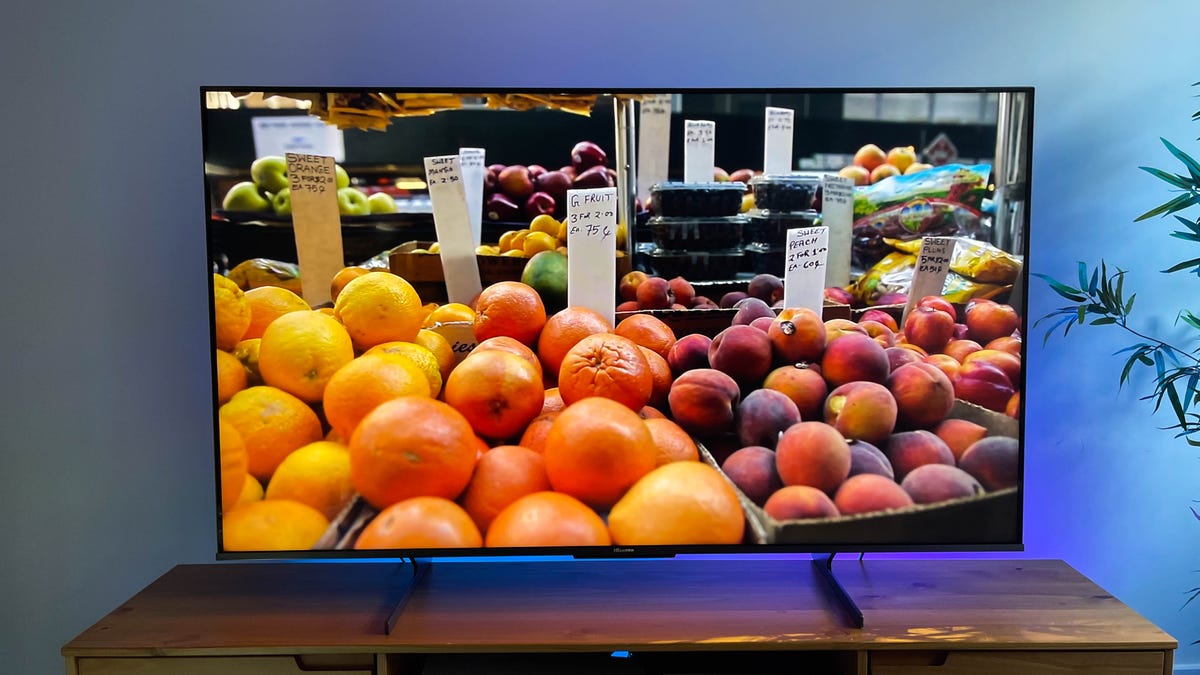
David Katzmaier
Hisense U8H series sizes
I performed a hands-on evaluation of the 65-inch Hisense U8H series, but this review also applies to the other screen sizes in the series. Aside from different numbers of local dimming zones, detailed below, all sizes have similar specs and should provide similar picture quality. Note that the U8H doesn’t include an 85-inch size, while the TCL 6-Series does.
- Hisense 55U8H, 55-inch
- Hisense 65U8H, 65-inch
- Hisense 75U8H, 75-inch
Modern panel touches, standard legs, basic remote
The Hisense U8H cuts a sleek, respectable figure but doesn’t differentiate itself much from other TVs on the market. The bottom edge of the frame is thin, textured metallic gray with a shiny central logo, while the top and sides are even thinner, with screen glass that reaches almost all the way to the edge.
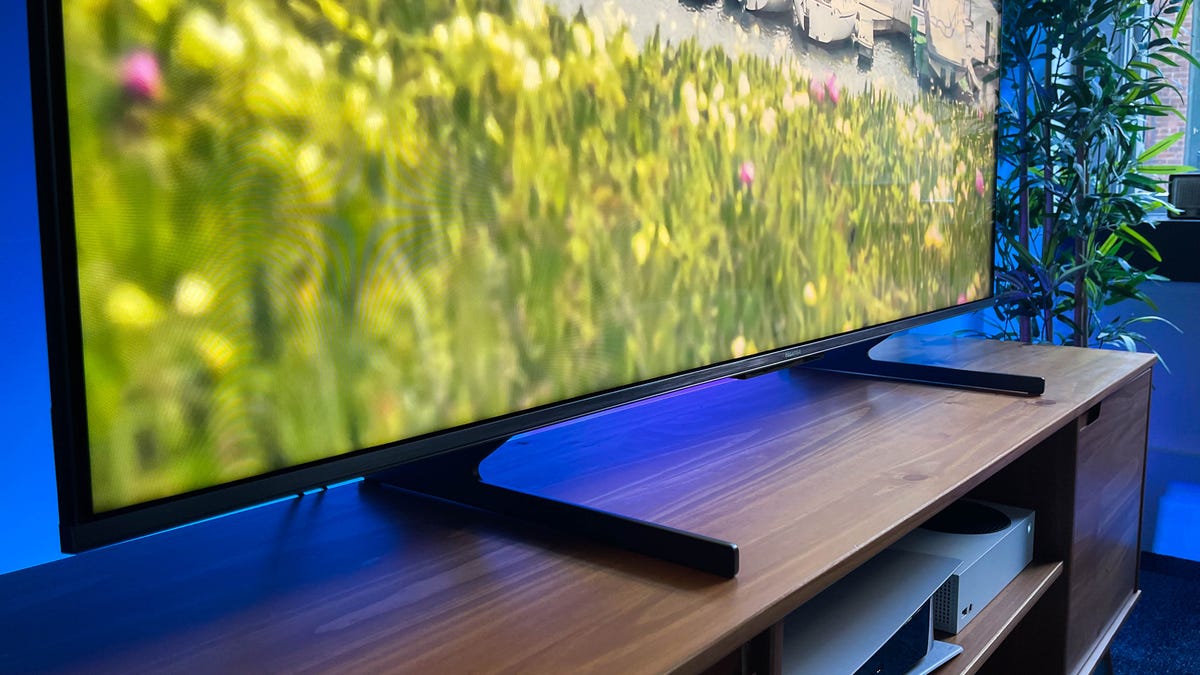
David Katzmaier
Unlike the TCL, last year’s U8G and higher-end Samsung and LG TVs, which use the central pedestal stand I prefer, tabletop support for the U8H consists of the basic pair of stand legs spread to the sides of the panel. You can choose from two different positions, one slightly more central than the other, but the legs are still further apart than the Vizio MQX allows, for example, so you’ll still need a relatively wide piece of furniture to support the U8H.
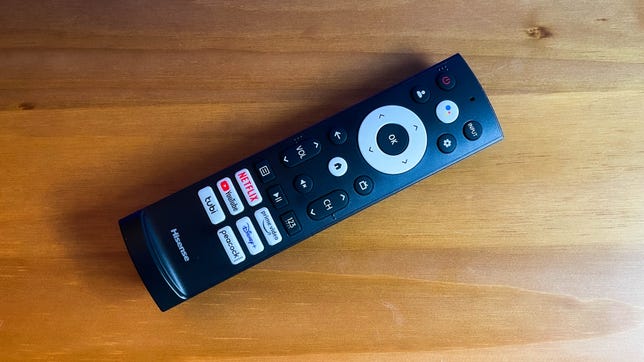
David Katzmaier
Hisense’s remote is not my favorite. It’s a standard black, rubber-buttoned clicker with two different menu buttons (one gear-shaped and another “hamburger”), a dedicated profile key (why???) and no fewer than six shortcut keys — the usual suspects and, for some reason, Tubi. Another button summons Google Assistant, which you can talk to via remote, although I had to manually pair the clicker to support Bluetooth before I could use voice search. You can also summon the Assistant by saying “OK Google” into thin air, thanks to the U8H’s built-in far-field mic.
Google TV: Fast, rich in features (and clutter)
Among all of the smart TV systems I like Google TV second-best, after Roku. Highlights include excellent voice results thanks to Google Assistant, tight integration with Google apps in particular YouTube and YouTube TV, and more apps overall, thanks to the Play store, than proprietary systems like Samsung and LG.
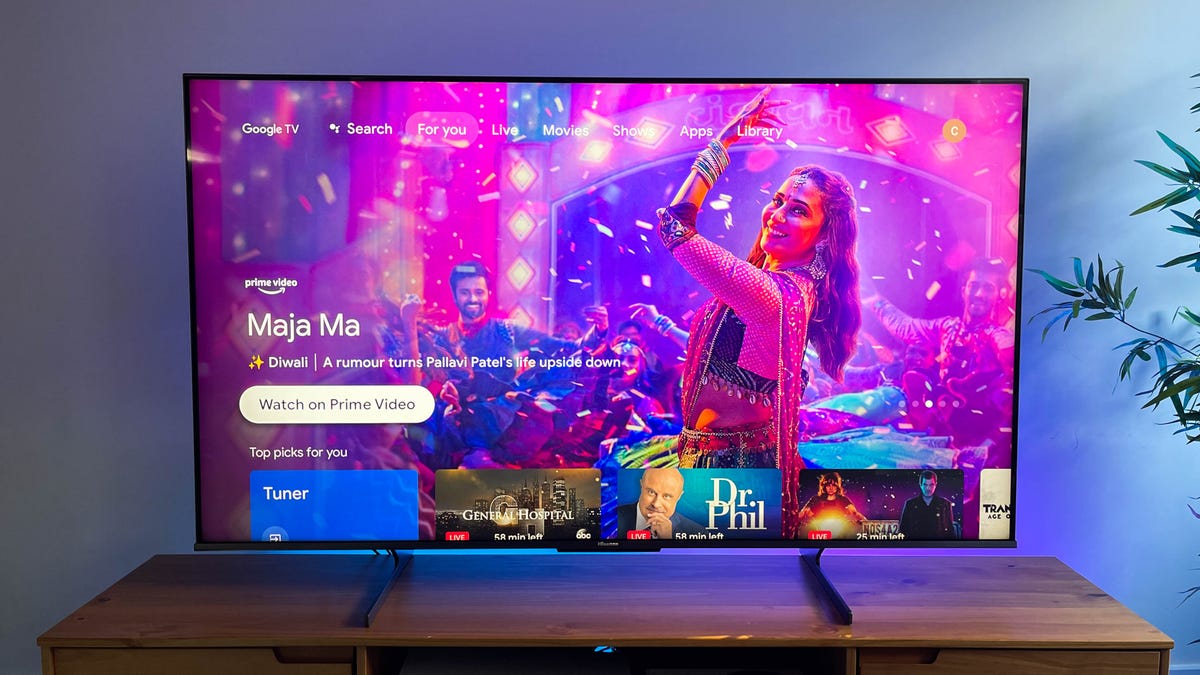
David Katzmaier
Responses were quick enough, on par with the TCL 6-Series and a step faster than the cheaper A6H, which we’ve also tested. The main issue was clutter. I didn’t love the large chunk of space at the top devoted to promotions of shows and movies on various services. I also wish the “continue watching” row was higher-up rather than placed below the “top picks for you” and apps rows. There were lots of suggestions across various apps but still plenty of content I didn’t care about. Search results were also worse than on the Roku, with too many YouTube videos coming up. Personally I prefer the simplicity of Roku menus.
Google TV’s profiles worked well. I was easily able to set up a kid’s profile, and I appreciated that appropriate apps like YouTube Kids and PBS Kids were suggested for me to add, and that Netflix automatically invoked the kids profile. During setup I was also prompted to set screen time limits, create a profile picture and more. Google TV’s system provides better parental controls than Roku, although Fire TV is similarly robust.
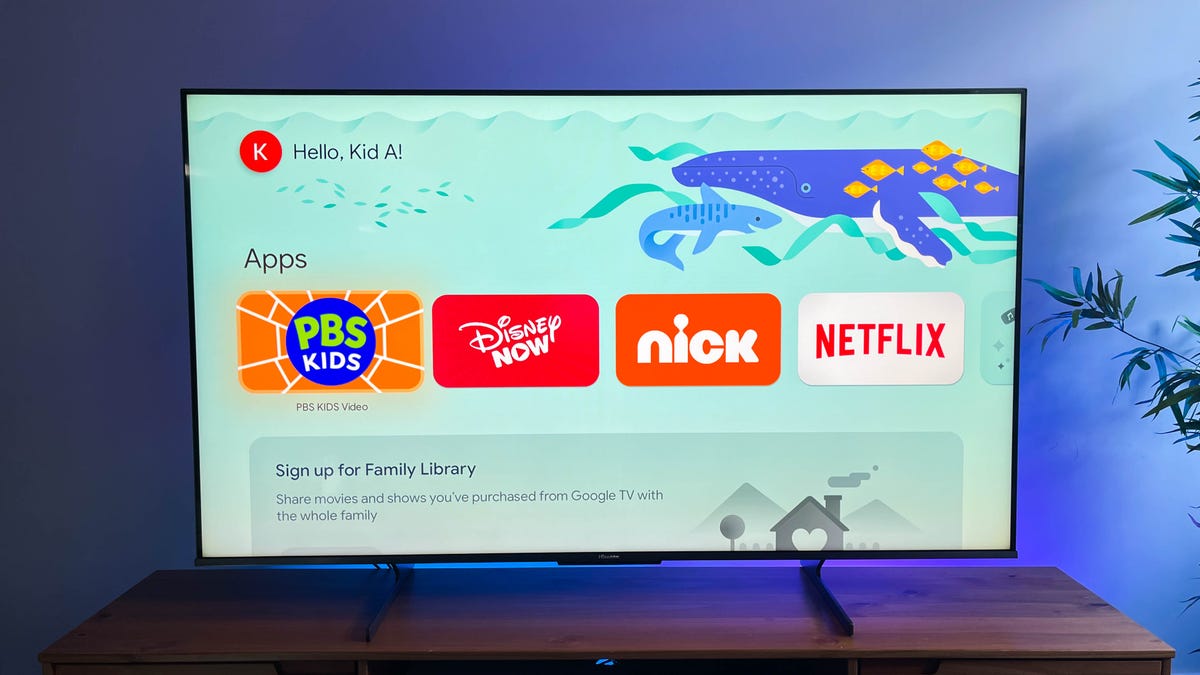
David Katzmaier
Another nice touch is ambient mode, which shows select art, or your own images in Google Photos, as a screensaver. The U8H also lets you control the TV with Alexa if you pair it with a device like an Echo Dot.
Features: Mini-LED, maximum local dimming zones
The big difference between the U8H and cheaper LCD-based TVs is its mini-LED backlight. Mini-LEDs are, as the name suggests, smaller than standard LEDs, allowing them to be grouped into more local dimming zones. Full-array local dimming is the best way to improve picture quality on LCD TVs. It allows the screen to dim and brighten different areas simultaneously. Smaller areas, or more dimming zones, mean more precise illumination — which ultimately increases contrast, the most important ingredient in a good picture — but they’re not the only factor.
The U8H has more dimming zones than other 2022 TVs I’ve tested, including the TCL (Samsung and Sonu don’t disclose their number of local dimming zones).
Local dimming zones compared
| Hisense U8H | TCL 6-Series | Vizio MQX | |
|---|---|---|---|
| 50-inch/55-inch | 338 | 204 | 16 |
| 65-inch | 504 | 288 | 30 |
| 75-inch | 528 | 360 | 42 |
| 85-inch | N/A | 448 | N/A |
The U8H has a true 120Hz refresh rate, which leads to better motion performance. Like most TVs in its class today, it also uses quantum dots that help improve color compared to non-QD-equipped TVs. And of course it supports both Dolby Vision and HDR10 high dynamic range formats. These days basically the only manufacturer that doesn’t is Samsung. The U8H also has Dolby Vision IQ, which works with an ambient light sensor to automatically adjust the picture.
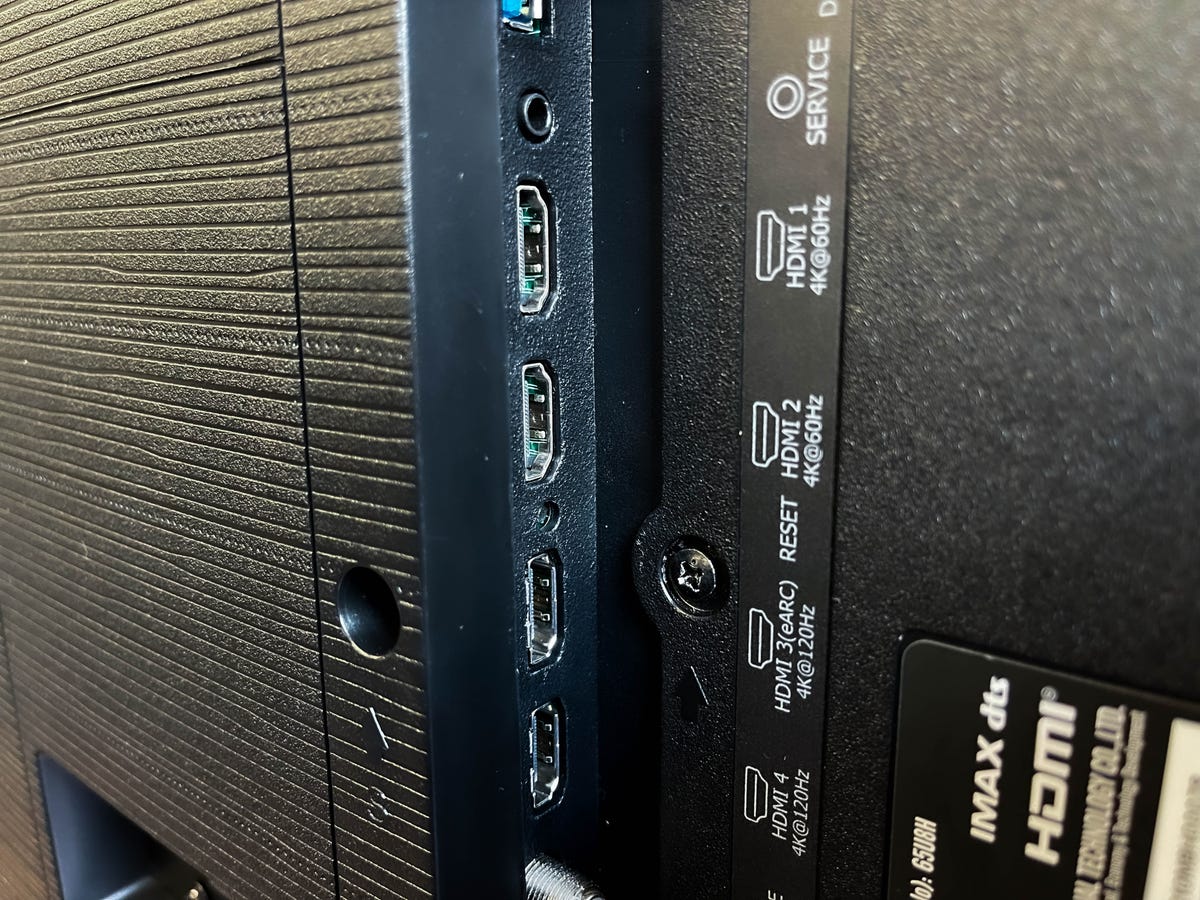
David Katzmaier
- Four HDMI inputs (two with 4K/120Hz, one with eARC)
- Analog (composite) video input
- USB port (2.0)
- Ethernet (wired internet)
- Headphone jack
- Optical digital audio output
- RF (antenna) input with ATSC 3.0 NextGen TV
The biggest step-up in connections compared to the U8G from last year is the U8H’s ability to accept 4K/120Hz input signals, from an Xbox Series X or PlayStation 5, for example. The TV is actually capable of 144Hz input, according to TCL, but that extra bit of refresh isn’t a big deal in my book, and is only available on select PC cards. Other gaming extras are par for the midrange TV course, namely VRR, or variable refresh rate, and ALLM (auto game mode). One of the inputs also supports eARC.
The U8H’s antenna input has a built-in ATSC 3.0 over-the-air tuner, which allows it to receive NextGen TV broadcasts. Those are still only available in a small number of markets so I didn’t get the chance to check out this feature, but it’s nice to know that once the broadcasts become more widespread, U8H owners won’t have to connect an external tuner box to watch.
Picture quality comparisons
The Hisense U8H delivered excellent overall image quality. For my side-by-side comparisons I lined up the Hisense U8H next to the TCL 6-Series, another mini-LED-equipped TV in the same price range, and the Vizio MQX, which lacks mini-LED, has fewer dimming zones and costs a bit less.
TV and movies: Comparing the TCL and the Hisense went back-and-forth, with each showing their strengths and weaknesses, but overall I give the edge to the TCL for its more theatrical presentation, despite the Hisense’s superior contrast and impact.
The nighttime scene at the beginning of the first episode of Glitch on Netflix provided an example. The shadows in the face and clothing of the girl were a little less detailed on the Hisense, and her skin tone was bluer and less realistic than on the TCL. Meanwhile the Vizio lagged them both with a less impactful image.
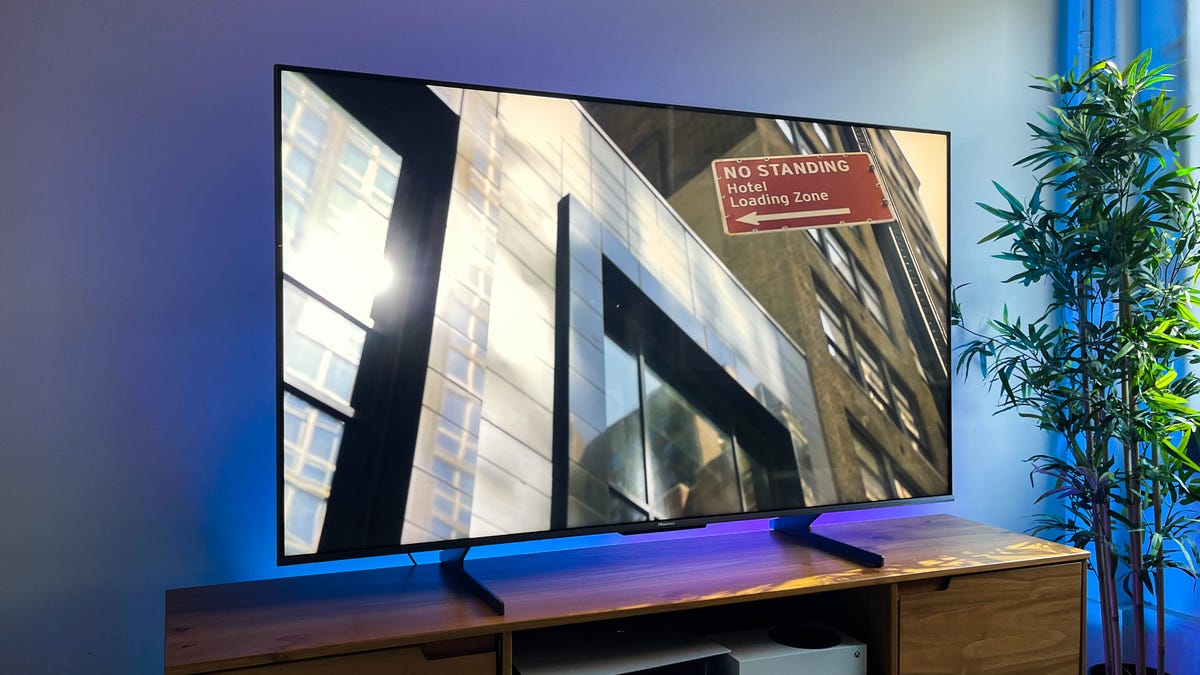
David Katzmaier
The Hisense delivered brighter highlights, however, for example the white in her short as the light shines down from above. I measured the white light itself as she stared up (2:28) and the Hisense won out (807 nits to the TCL’s 699). I noticed the Hisense’s brightness in other areas as well, for example the titles overlaying the image.
With less-theathical content, such as the test montage from the Spears and Munsil 4K Blu-ray, the extra brightness of the Hisense was again evident. Its image showed just a bit more brilliance and impact than the TCL, although the two were close. In the scenes with objects against a black background black levels were basically identical between the two — very little blooming, inky-dark and a step better than the Vizio — but the objects themselves, like the honey dripper and peacock feather, looked brighter on the Hisense. Colors on the TCL and Hisense also looked superb, and similarly brilliant.
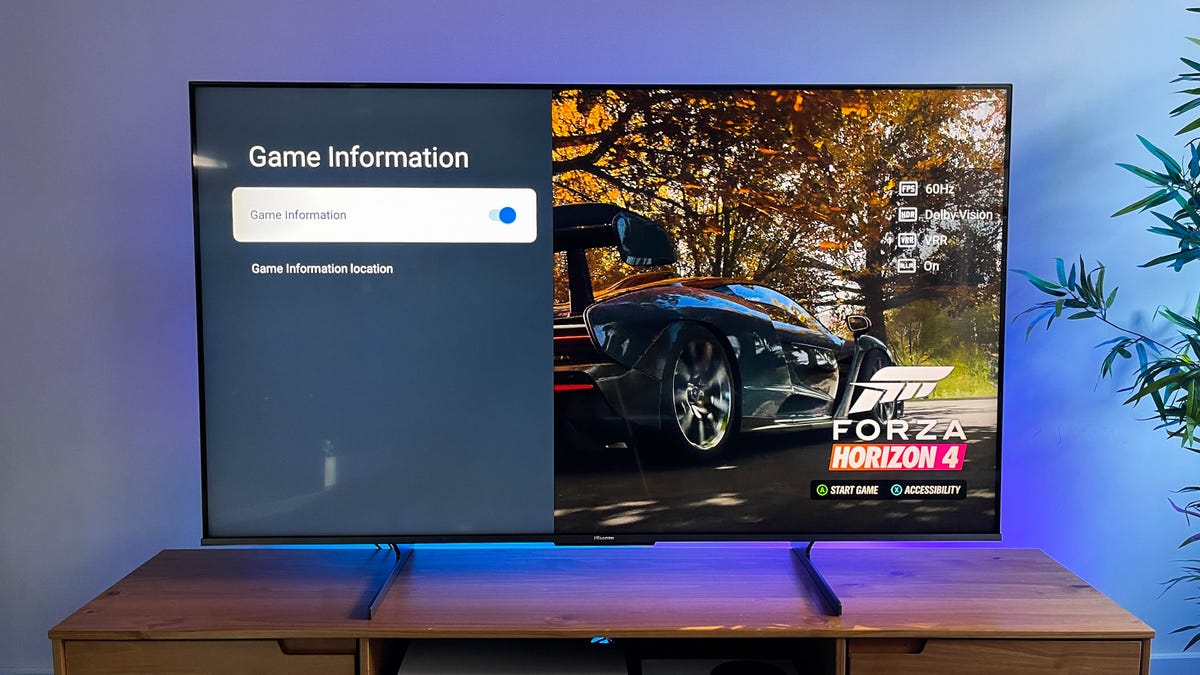
David Katzmaier
Gaming: The U8H is an excellent gaming TV. Playing Halo: Infinite on Xbox I appreciated its bright highlights, relatively accurate color and superb contrast. The TCL did expose a bit more detail in shadows in the default gaming setting, but increasing the Black Level setting in Hisense’s GameZone menu brought up shadows nicely.
The U8H doesn’t have as extensive a gaming menu as new Samsung or LG TVs but it does offer more options and information than TCL or Vizio, courtesy of GameZone. In addition to adjusting black and white levels, you can toggle an overlay that displays vitals including real-time frames per second, HDR, VRR and ALLM. The latter is supposed to engage game mode automatically but it didn’t do so with my Xbox, I had to manually select the “HDR Game” setting. Input lag on the U8H measures a respectable 15ms in 1080p and 4K HDR.
According to the information screen on my Xbox Series X the Hisense supports 4K/120Hz with HDR, including full Dolby Vision gaming. Note that to enable 4K/120Hz you’ll need to manually engage the “HDMI Enhanced” setting (Menu button on remote > HDMI format > Enhanced format) – most TVs I’ve tested don’t require this extra step, or perform it automatically.
Bright lighting: The U8H is a superb bright-room performer and one of the brightest TVs I’ve ever measured. It fell a bit short of the brightest, including the Samsung QN90B, the company’s own U8G from last year and the Vizio PX from 2020, but it’s still searingly bright. It’s also worth noting that unlike Samsung’s QN90 models it maintained peak brightness over time in its brightest picture modes.
Light output in nits
| TV | Brightest mode (SDR) | Accurate mode (SDR) | Brightest mode (HDR) | Accurate mode (HDR) |
|---|---|---|---|---|
| Samsung QN65Q90B | 2,625 | 974 | 3,316 | 1,981 |
| Hisense U8H | 1,605 | 1,605 | 1,867 | 1,867 |
| TCL 65R655 | 1,292 | 624 | 1,387 | 1,194 |
| TCL 65R635 (2020) | 1,114 | 792 | 1,292 | 1,102 |
| Vizio M65QXM-K03 | 958 | 608 | 939 | 742 |
| Samsung QN55Q60B | 549 | 343 | 540 | 514 |
| LG OLED65C2 | 413 | 389 | 812 | 759 |
On most TVs the brightest modes are woefully inaccurate but the Hisense is a happy exception. For both standard- and high-dynamic range (SDR and HDR) sources, its accurate modes (Theater Day and IMAX, respectively) were also the brightest. I’d recommend simply leaving the TV in those modes for bright-room viewing.
The screen of the Hisense reduced reflections and preserved black levels better than the Vizio and about the same as the TCL.
Uniformity and viewing angle: The screen of the UH8 showed no major uniformity issues and preserved off-angle color fidelity about as well as the TCL, and slightly better than the Vizio.
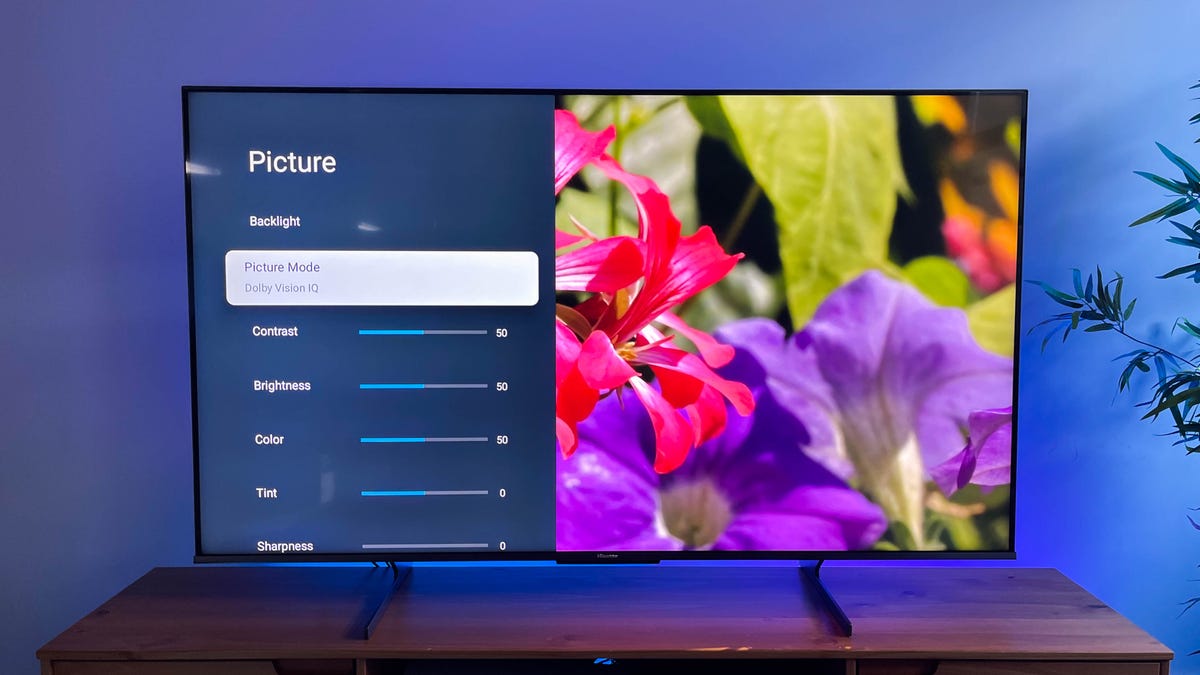
David Katzmaier
Hisense U8H picture setting and measurement notes
Three picture modes for HDR – HDR Theater, Filmmaker and IMAX modes – were essentially equally accurate and bright, but I ended up choosing IMAX because the other two required tweaks to the default settings to look their best. Filmmaker engages the ambient light sensor by default, and HDR Theater does the same for the Soap Opera Effect, and in both cases I’d generally want to disable those “features.”
In SDR mode it was between Theater Night and Filmmaker, which both require similar tweaks. Filmmaker with the light sensor disabled was too bright, and less-accurate than Theater Night, so I went with the latter for the SDR Geek Box measurements below. Again it engages motion smoothing by default, however, so I recommend turning it off (Picture > Advanced Settings > Motion Enhancement > Off). In my opinion that setting should be disabled from the start, as it is with the best picture modes of Hisense’s competitors.
Geek box
| Test | Result | Score |
|---|---|---|
| Black luminance (0%) | 0.014 | Good |
| Peak white luminance (SDR) | 1605 | Good |
| Avg. gamma (10-100%) | 2.33 | Average |
| Avg. grayscale error (10-100%) | 1.90 | Good |
| Dark gray error (30%) | 1.80 | Good |
| Bright gray error (80%) | 1.94 | Good |
| Avg. color checker error | 1.69 | Good |
| Avg. saturation sweeps error | 1.78 | Good |
| Avg. color error | 3.21 | Average |
| 1080p/24 Cadence (IAL) | Pass | Good |
| Input lag (Game mode) | 15.33 | Good |
| HDR10 | ||
| Black luminance (0%) | 0.006 | Good |
| Peak white luminance (10% win) | 1867 | Good |
| Gamut % UHDA/P3 (CIE 1976) | 97.58 | Good |
| ColorMatch HDR error | 3.30 | Average |
| Avg. color checker error | 1.45 | Good |
| Input lag (Game mode, 4K HDR) | 15.43 | Good |
See How We Test TVs for more details and explanations of the Geek Box results.
Portrait Displays Calman calibration software was used in this review.




